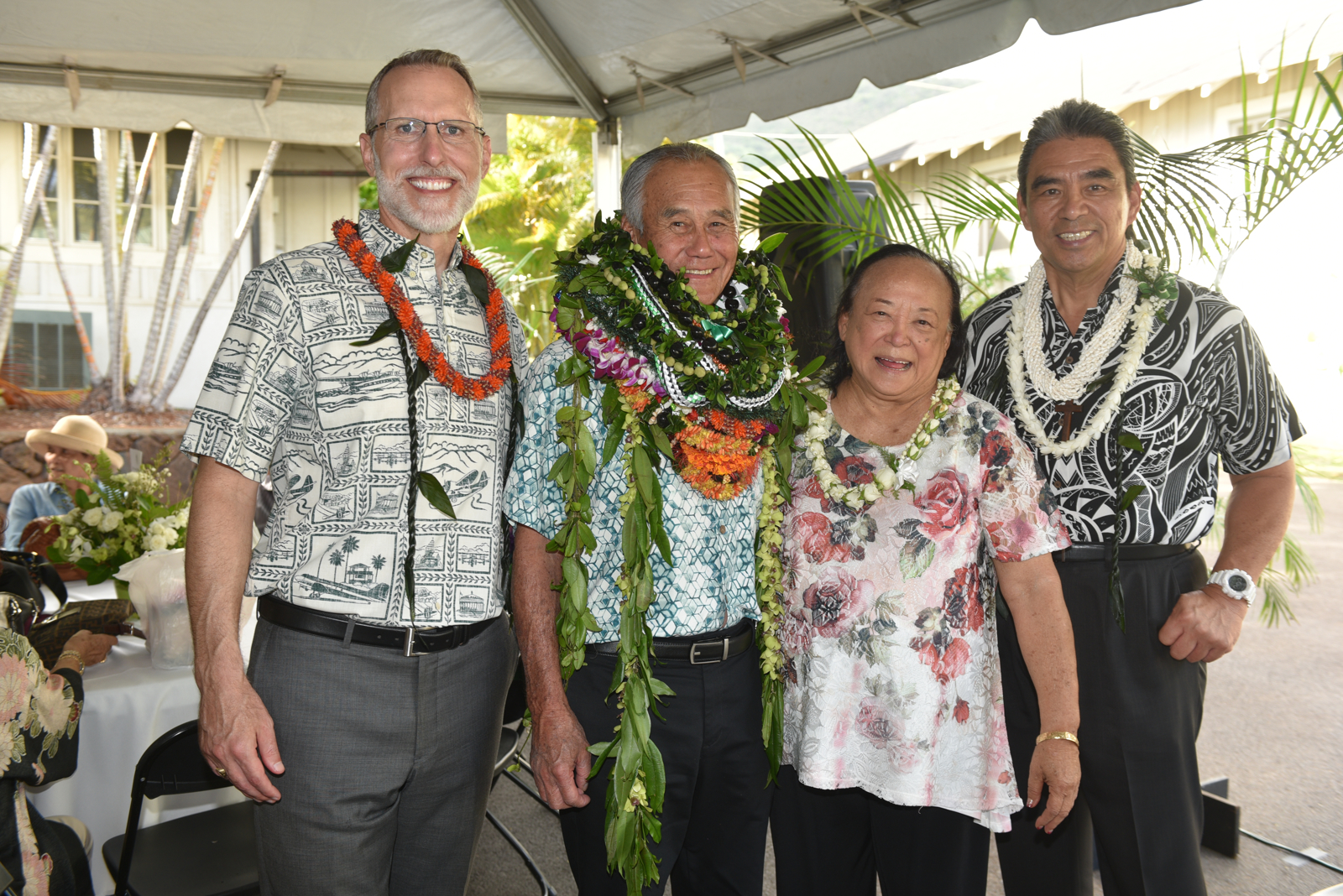When speaking with our students, I often remind them that no one at Mid-Pacific walks alone. My message is a reminder that no matter who they are or what their stage of life, they have been surrounded by people who helped them succeed. The Mid-Pacific community is defined by its core values of ‘ohana, caring, diversity, innovation, and creativity. Thanks to our countless volunteers, alumni, parents and grandparents, and donors, Mid-Pacific students are in the best possible environment to grow and thrive.
I consider myself a student of Mid-Pacific, learning as much about our history as possible because I believe that our history can gently reveal the truth of our present. And the truth is that Mid-Pacific was entirely built on the commitment of volunteers, donors, and community leaders who believed in the power of education as a globally unifying force.
In 1907, one of Mid-Pacific’s founders, Doremeus Scudder, proclaimed that Mid-Pacific “would fill the gap in our present system of private schools by providing for those races not already provided for.” It was an extremely progressive vision for its time. Our founders had traveled the globe and had witnessed first-hand how powerful the role of intercultural understanding was in overcoming geopolitical problems. They believed that educating students of different ethnicities and socioeconomic backgrounds would be the most effective way to develop globally minded citizens who were ready to enter the fast pace of the industrial revolution. However, there wasn’t a school like that in Hawai‘i or in the United States. So they decided to build one.
Two years later, on June 5, 1909 Francis Damon, another of Mid-Pacific’s founders, joined students, teachers, community members, and visiting dignitaries in celebrating the installation of the cornerstone at Wilcox Hall on Mid-Pacific’s new Mānoa Valley campus. (One hundred and twelve years later, that cornerstone greets everyone who enters our Elementary school administrative building.)
In his recollections of that momentous day, Mr. Damon noted the significance of four students who played a special role in the cornerstone’s installation. The students represented the Japanese,Chinese, Korean, and Hawaiian cultures that Mid-Pacific was built to support and encourage. They also represented something more profound. At a time when the world was undergoing the upheaval of the industrial revolution and geopolitical conflicts that would lead to World War I, Mid-Pacific’s earliest students were invited to participate in the groundbreaking of a school that was built to broadcast a simple but powerful message: that we as a community, a nation, and a society are stronger through inclusivity than exclusivity.
Thanks to the deep and abiding support of our community, Mid-Pacific is a leader in the independent school community and an outstanding place for children to grow and thrive. As you read the stories within this edition of Mid-Pacific Today, I hope you can hear Francis Damon’s words of encouragement to his turn-of-the-century peers, asking them to get involved and to help the students of Mid-Pacific. He said, “It is a good time to get above your denominational or national preferences and plunge into the broader current of young life which flows all about you.”
Thank you for plunging into the “broader current of young life”at Mid-Pacific. I am grateful for your commitment and I think Mr. Damon would be exceedingly proud of what we are all accomplishing together.
E Kūlia Kākou,
(Let’s strive and aspire together)
Paul Turnbull, Ph.D.
President

